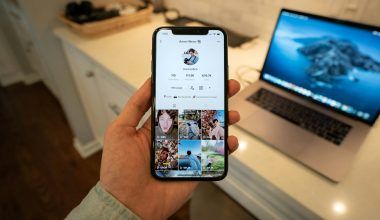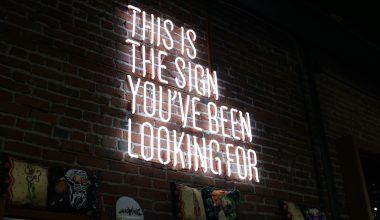If you’ve ever wondered whether do youtube channels that compines own get ad revenue, you’re not alone. Many creators experiment with different types of content strategies, and combining or repurposing existing content is a popular approach. But does this strategy work when it comes to monetization? Let’s break it down.
Understanding YouTube’s Monetization Rules
To answer this question, it’s important to understand YouTube’s monetization rules. YouTube’s Partner Program (YPP) allows channels to earn money through ads, memberships, and other revenue streams. However, there are specific criteria and guidelines that creators must follow.
For starters, YouTube requires:
- At least 1,000 subscribers
- 4,000 valid watch hours in the past 12 months
- Compliance with all YouTube’s policies
Channels that combine content need to pay extra attention to these rules. YouTube emphasizes originality and adherence to copyright laws. If your channel primarily uses reused or unoriginal content, it might struggle to qualify for monetization.
What Counts as “Reused Content”?
Reused content refers to material taken from other sources that doesn’t add significant value or original commentary. For example, if your channel uploads movie clips, TV show highlights, or compilations of someone else’s work without adding meaningful input, it’s considered reused content.
That doesn’t mean combining content is always against YouTube’s rules. If you’re adding original commentary, editing creatively, or transforming the content to make it unique, your chances of earning ad revenue increase. Think about channels that do reaction videos, educational breakdowns, or parody content. These are examples of combining content in a way that complies with YouTube’s policies.
How to Combine Content Without Breaking Rules
YouTube channels that combine content successfully follow a few key strategies:
- Add Commentary or Analysis: If you’re using existing videos, include your thoughts, reactions, or a detailed analysis to make the content unique.
- Transform the Material: Editing plays a big role here. Cut, rearrange, and enhance the content to create something entirely new. For instance, a sports highlight reel could include player stats, expert opinions, or a thematic story.
- Use Royalty-Free or Creative Commons Content: Not all content is copyrighted. Using royalty-free or Creative Commons-licensed material gives you more freedom to create while staying within YouTube’s rules.
- Seek Permissions: When in doubt, reach out to the original creators for permission to use their content. Having explicit approval reduces the risk of demonetization.
Examples of Successful Combined Content Channels
There are many YouTube channels that earn ad revenue by combining content effectively. Some create engaging compilations of publicly available footage, while others mix media to tell compelling stories. Let’s look at a few examples:
- Educational Mashups: Channels that blend historical footage with expert narration can create unique documentaries.
- Reaction Videos: These channels combine original videos with live commentary or reactions, offering entertainment and insights.
- Tutorials and Explainers: Some creators use snippets of existing content to illustrate points in tutorials, always ensuring they add their unique perspective.
Common Pitfalls to Avoid
If you’re thinking about combining content on your channel, avoid these common mistakes:
- Lack of Originality: Simply re-uploading someone else’s work won’t cut it.
- Ignoring Copyright Laws: Using copyrighted material without permission can lead to strikes and demonetization.
- Minimal Effort: Even with permission, your content must show effort. Slapping together clips with no context doesn’t add value.
YouTube’s Review Process for Monetization
When you apply for the YouTube Partner Program, your channel goes through a manual review. During this review, YouTube’s team checks if your content meets their guidelines. Channels with reused or combined content might face extra scrutiny, so it’s important to be transparent and proactive.
Here’s how to prepare:
- Provide Explanations: If you use a lot of combined content, include notes explaining how your videos are transformative.
- Demonstrate Consistency: Show that your channel regularly adds value and maintains originality.
- Engage Your Audience: High engagement signals (like comments and shares) can reinforce the value of your content.
Beyond Ad Revenue: Alternative Monetization Options
Even if your channel struggles with ad revenue, combining content doesn’t mean you’re out of options. Creators can explore alternative revenue streams like:
- Patreon or Memberships: Offer exclusive perks to subscribers who support you directly.
- Merchandising: Sell branded merchandise that aligns with your channel’s theme.
- Sponsored Content: Partner with brands for promotions that fit your audience’s interests.
- Affiliate Marketing: Include affiliate links in your descriptions to earn commissions.
Final Thoughts
So, do youtube channels that compines own get ad revenue? The answer depends on how you approach it. While it’s possible to monetize combined content, the key lies in creativity, originality, and compliance with YouTube’s guidelines. By adding value and transforming the material, you can build a sustainable channel that earns revenue and engages viewers.
If you’re just starting or considering a shift in strategy, focus on creating content that’s both unique and valuable. With effort and consistency, your combined-content channel can thrive on YouTube.
For further reading, explore these related articles:
- The Incredible Journey of Lewis Capaldi: A Singer Who Stole Our Hearts
- The Legacy of Michael Jackson’s Thriller: A Revolution in Music and Culture
For additional resources on music marketing and distribution, visit DMT Records Pvt. Ltd..






